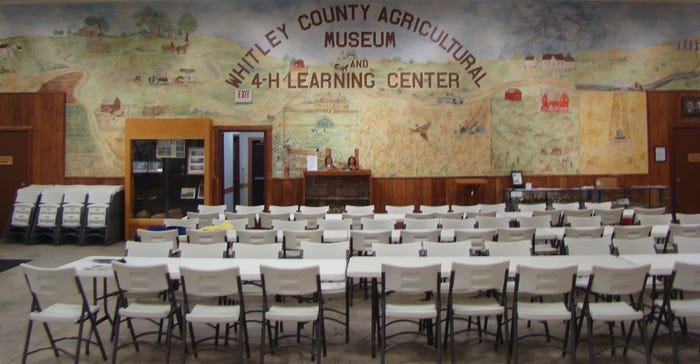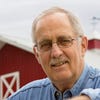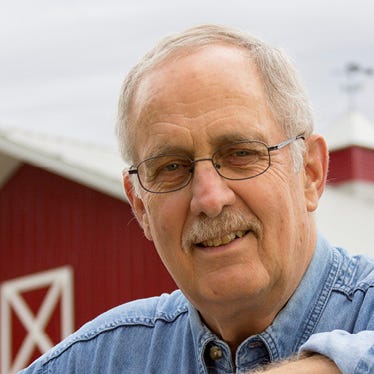July 27, 2019

It all began with a simple suggestion.
“A gentleman named Galen Wilkinson approached our 4-H board and told us, ‘I have a lot of antiques. If you guys would build a building, I think I could fill it,’” recalls Ron Myer, who now serves as volunteer board vice president and educational director of the Whitley County Agricultural Museum and 4-H Learning Center. The facility is located at the Whitley County 4-H Park in Columbia City, Ind.
The board liked Wilkinson’s idea and got to work. After receiving some large grants and financial and in-kind support from local businesses and the community, the museum opened in 2006. No tax dollars have ever been used to build or support the museum.
Myer says the purpose of the facility is “to preserve the agricultural history of Whitley County and Indiana. And because every generation is getting further away from the farm, they don’t realize how hard their ancestors had to work. Kids especially need to understand that this country just didn’t happen.”
Farm relics
The museum is packed with relics — farm equipment, hand tools, and a vast assortment of farm antiques and memorabilia. It also features 15 learning stations where groups, especially kids, can do hands-on activities and crafts. They can learn about candle-making, make corn shuck dolls, learn how their ancestors washed their clothes and attended one-room schools, and see wooden water buckets being made.
They can also learn about milk production and “milk” a full-size replica cow by hand. The newest addition, made last year, is an authentic, working 50-foot windmill, which was donated by a local family.
The facility serves not only as a museum but also as a venue — complete with banquet and catering capabilities, Wi-Fi, and audiovisual capabilities — which can be rented for all sorts of gatherings. Poignantly, it was the site for Galen Wilkinson’s viewing two years ago.
“People like it,” Myer says. “It’s not like a regular banquet hall, where you’re enclosed by four walls. After you eat, there are things you can look at and learn some history, and a lot of people haven’t seen anything like this before.”
Popular field trip destination
Since the facility opened, it has been visited by more than 10,000 students for more than 3,500 hours of supervised instruction at the learning centers. Fourth graders, particularly, who have a required Indiana history component, are frequent groups to visit.
“We’ve never had any trouble with any of them,” says Myer, himself a retired teacher. “Once they get here, they’re really engaged and eager to learn.”
And they retain what they learn. “One girl who visited here went home, and her family had roasting ears that evening,” Myer says. “She asked her mom if she could have the shucks. She made a corn shuck doll, just like she’d seen done here at the museum. Then she came back and gave it to the presenter.”
Kids aren’t the only ones who need to learn about agriculture. One time, an adult was listening to a presentation about the museum’s “cow” and how milk is produced.
“She interrupted the presenter and said, ‘That’s not how milk is produced. They make it at the dairy and then ship it to the supermarket,’” Myer says. “That just shows how much education we still have to do.”
Always changing
To keep things fresh, the museum’s board comes up with a new theme every year. Last year, it was tillage, with examples of historic tillage tools. This year it’s small tractors, with a good-size collection of garden and lawn tractors. Myer says members of the community are more than happy to lend their personal antiques for the cause.
Besides generous community support, Myer attributes much of the museum’s success to its board.
“We have an amazing, all-volunteer, nine-member working board,” he says. “Most of them are farmers, so when we need something done, they just show up, with skid loaders, semis or whatever we need. When we make a decision to do something, we come together and get it done.”
Myer says the board is also taking steps to perpetuate the museum’s future.
“Us old guys aren’t going to be around forever,” he says. “We’re working on different projects with the FFA to get them involved, and we hope some of them can become leaders and carry on the vision and mission of the museum in years to come.”
For more information, or to schedule an event, visit whitleycountyagmuseum.com. See photos of the facility in the accompanying slideshow.
Boone writes from Wabash, Ind.
About the Author(s)
You May Also Like






